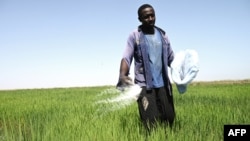Soil is “at the root of many pressing national security challenges that we face,” declared Secretary of State Antony Blinken at the World Economic Forum in Davos, Switzerland.
“Without good soil, crops fail, prices rise, people go hungry. Eroding soil also worsens the impact of droughts, of floods, of other climate-driven extreme weather, making crop yields even lower – and as a result, food even scarcer,” he said.
There are 700 million people presently who do not know if they will have enough food to eat tomorrow. That’s why the United States has been working to tackle this food crisis and support those who are most affected by it, said Secretary Blinken:
“Going back to January of 2021, the U.S. Government has devoted $17.5 billion to provide vital sustenance to people in need. We are honored to fund over one third of the World Food Program’s budget.”
The United States is also partnering to produce better, stronger, and more resilient crops. Indeed, the U.S. Agriculture Innovation Mission for Climate initiative with the UAE has mobilized $17 billion to invest in efforts to regenerate degraded crop land and capture carbon in soil.
Together with the African Union and the Food and Agriculture Organization, the United States has launched a new program called Vision for Adapted Crops and Soils, or VACS. “It is part of the USAID’s flagship Feed the Future initiative,” explained Secretary Blinken:
“This is our comprehensive response in the U.S. Government to food insecurity around the world, and the approach that we have is two-pronged. And it really boils down to this, two very basic things: First, we’re investing above ground, identifying the indigenous African crops that are most nutritious and most resilient to climate change, improving these varieties, delivering them to the world; at the same time, we’re investing below ground, mapping, conserving, building healthy soils. If you get this right, if you get the seeds right, if you get the soil right, then you have your agricultural foundation for the future.”
There are few things more important to humanity, “than figuring out how to cultivate this planet so that it can feed and support all of us,” said Secretary Blinken. “We have an opportunity in this moment to actually deliver better for people today while actually building a sustainable tomorrow.”














